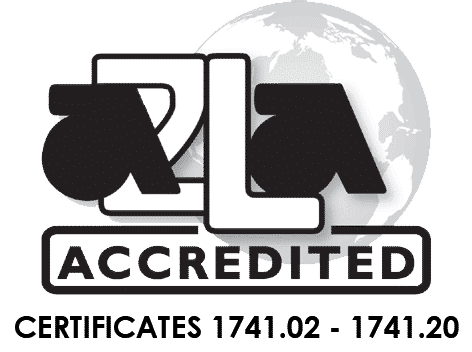Industrial Terminology Glossary – R
Raceway
An closed passage that holds bearings, wires or cables
Radio Frequency Interference (RFI)
Also called electromagnetic interference (EMI), the disturbance of an electrical circuit by an outside source through electromagnetic induction, electrostatic coupling, or conduction.
Radius Gage
A tool used to measure the radius of an object, requires a bright light behind the object to be measured. The gauge is placed against the edge to be measured, and any light leakage indicates a mismatch which requires correction.
Rainproof/Raintight
A structure that is built to be able to withstand and operate in the rain
RAM (Electronics)
Random Access Memory is readily available memory that can be accessed or written on quickly. Data in RAM is lost when the computer powers down
Range
The span of values over which a meter will function without entering overload condition, i.e., 0-150 VAC, 0-10 amps, etc.
Rated Output
Refers to the output provided by a device when the input load is at the maximum rated value.
Rated Voltage to Ground
The maximum voltage that can safely exist between the instrument measuring circuit and ground, or mounting panel. This voltage is much lower than the dielectric strength test voltage of the instrument.
Ratiometric Measurement
A technique used in some digital instruments to obtain highly accurate resistance measurements. The resistance under measurement is made a part of a resistance-ratio set, and its excitation is a self-determined fraction of the reference voltage standard used. Contact resistance and drift in the reference are thereby prevented from influencing the measurement accuracy.
Reactance
The restriction of current in an AC circuit that doesn’t come from resistors. Reactance is a function of inductance and capacitance in a circuit
Reactive Power (KVAR)
Power that exists in an AC circuit when the voltage and current are not in phase. While reactive power transfers no net energy to a load, it is essential to move active power through a transmission and distribution system.
Read Only Memory (ROM)
Permanent memory which can be accessed but can’t be written over. Data in ROM is not lost when the system is powered down.
Readability
Refers to the least significant digit readable on a digital display.
Rectifier-type Meter
A DC meter equipped with a solid-state rectifier at its input to convert AC Energy to DC energy. The instrument provides measurements of the average value of an AC voltage or current, and its scale is usually calibrated in terms of the RMS equivalent. Such calibration is accurate for pure sine-wave signals, but the accuracy decreases for distorted signals.
Reference Standard
An object, system, or experiment that bears a defined relationship to a unit of measurement of a physical quantity. The value of a reference standard is always stated with an accompanying statement of uncertainty, for example a 1kg weight with an uncertainty of ±3µg.
A measure of the moisture content in the air concerning the maximum water vapor capacity at a specific temperature. Read More…
Remote Sensing
A technique used in power supplies to regulate the voltage supplied to a load. Commonly used in strain gauge circuits to maintain constant voltage as the resistance in the circuit changes when strain is applied.
Repeatability
The closeness of the agreement between the results of successive measurements of the same measurand carried out under the same conditions of measurement.
Resistance
The measure of an object’s opposition to the flow of electrical current, measured in Ohms.
Resistivity
A measure of the resistance of a given size of a specific material to electrical conduction. Materials with low resistivity are known as conductors.
Resistor
An electrical component having a designed resistance to electrical current.
Resolution
The amount of change in a measurand required to observe a corresponding change on an indicator.
A tool in precision measurement that accurately determines the external diameter of cylindrical objects. Read More…
A precision instrument used to evaluate the texture of a surface, determining whether it is rough or smooth. Read More…
Roundness
The measure of how closely the shape of an object approaches that of a mathematically perfect circle. Roundness applies in two dimensions, such as the cross sectional circles along a cylindrical object such as a shaft or a cylindrical roller for a bearing
RS-232
Serial port that was once a standard feature of a personal computer, used for connections to modems, printers, mice, data storage, uninterruptible power supplies, and other peripheral devices. Still used for communication with many types of metrological equipment via a USB-RS232 converter.
RS-422
A technical standard originated by the Electronic Industries Alliance that specifies electrical characteristics of a digital signaling circuit
RS-485
Standard defining the electrical characteristics of drivers and receivers for use in serial communications systems
RTD (Resistance Temperature Detector)
A sensor used for temperature measurement based on the principle of how the electrical resistance of a metal changes with alterations in temperature. Read More…
RTD Simulator
Any of a variety of devices used to simulate the presence of an RTD probe when testing an RTD indicator. Devices range from simple decade resistance boxes to digital process calibrators or multifunction calibrators.
Runout
A 2D measurement that can be either be taken in the axial direction or in the radial direction. When measuring in the radial direction, runout combines both roundness and concentricity errors into one composite measurement.

